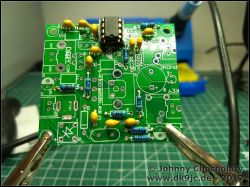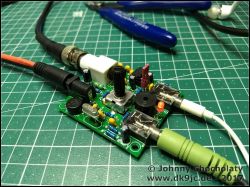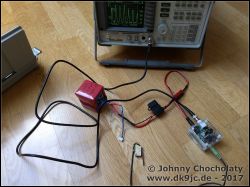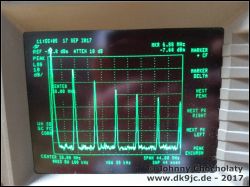Two weeks ago I ordered the S-Pixie kit for 4,79 Euro on Ebay incl. shipping and case from Hong-Kong. It took exactly 2 weeks to arrive. The kit came in a plastic bag as usual and included no instruction and no manual. I also got 7 more resistors and 5 more capacitors than needed. I found the Pixie schematics and part list online, so the assembling (with double-checking everything) took me about 2 hours. It worked on the first attempt and I received morse code on around 7023 kHz. While hooked up to my bench power suppy I checked the output power vs. the input voltage:
| 8,0V | 100mA | 100mW | 11,5V | 170mA | 300mW |
| 8,5V | 120mA | 130mW | 12V | 180mA | 300mW |
| 9,0V | 130mA | 190mW | 12,5V | 190mA | 310mW |
| 9,5V | 130mA | 200mW | 13V | 200mA | 350mW |
| 10V | 140mA | 210mW | 13,5V | 210mA | 380mW |
| 10,5V | 150mA | 290mW | 14V | 210mA | 400mW |
| 11V | 160mA | 300mW | - |
300mW output are reached with 11V only. For me that sounds like a good sweetspot and as the transistor Q02 will get very hot on TX, this is a good value for the battery voltage.
I later googled and found out that the Pixie is oscillating also while it is in receive-mode so I hooked it up to the spectrum analyzer to see if this is true and to also check the transmit spectral purity.
Here are the harmonics while the Pixie is in RX mode:
| 7 MHz | -7,5 dBm (0,177 mW) | 21 MHz | -29,78 dBm (0.0011 mW) |
| 14 MHz | -21,12 dBm (0,007 mW) |
- | - |

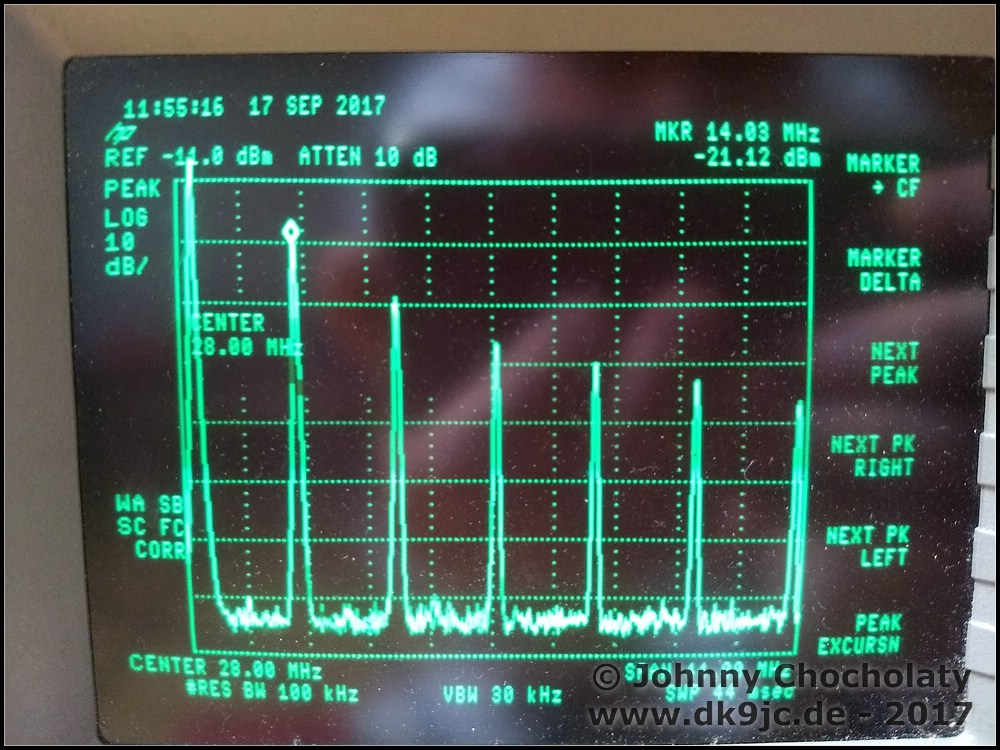

The Pixie's harmonics while transmitting:
| 7 MHz | 23,15 dBm (206mW) | 21 MHz | -14,58 dBm (0,03 mW) |
| 14 MHz | 7,71 dBm (6mW) | 28 MHz | -23,04 dBm (0,005mW) |
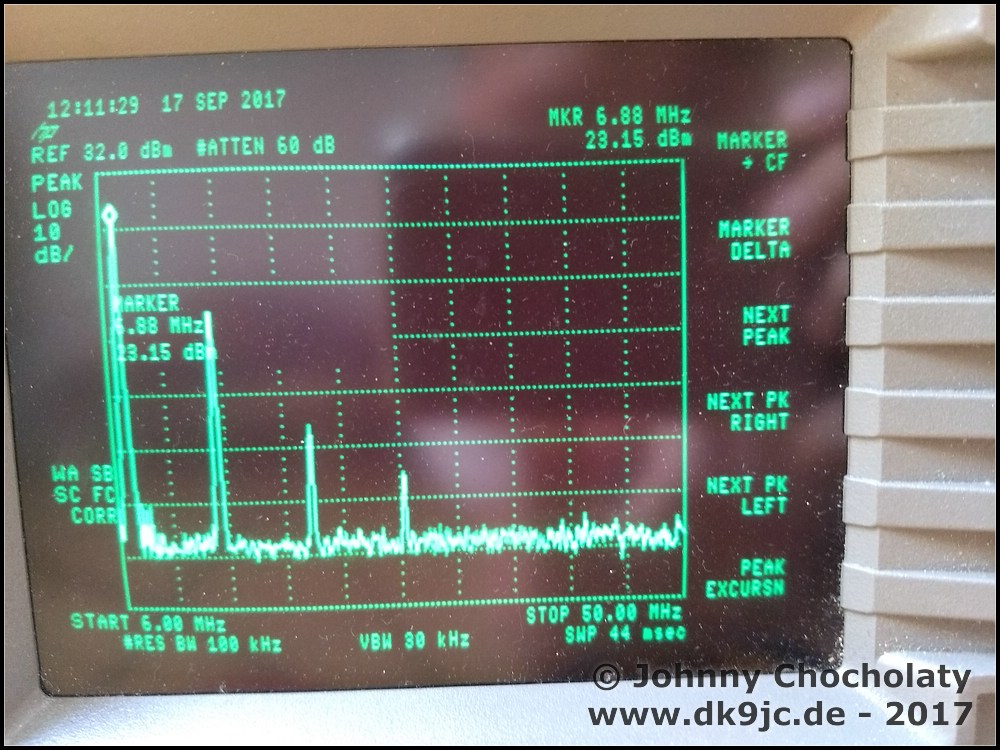



So my Pixie is pushing 6mW on 20m, while sending morse code on 40m. Not a good value. You should at least use a band pass filter when you use the Pixie.
After the measurements I had to call a real radio professional to confirm that the results are real. Thanks again Peter, DC2ZO.
Article from Anton, HB9ASB: PIXIE - unheilbar krank

